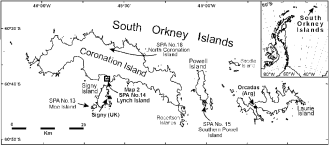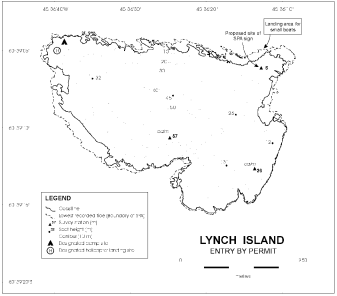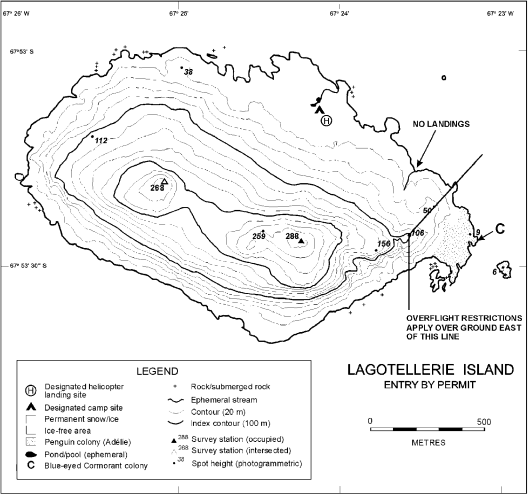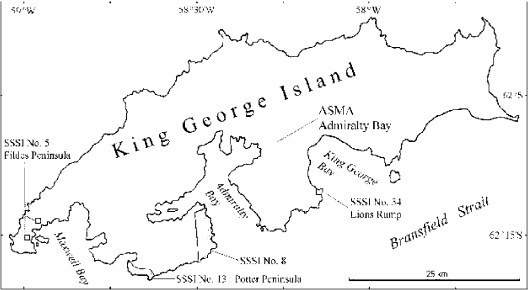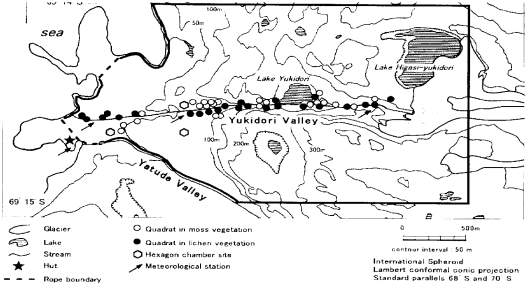Statutory Instruments
2002 No. 2054
ANTARCTICA
The Antarctic (Amendment) Regulations 2002
Made
2nd August 2002
Laid before Parliament
5th August 2002
Coming into force
27th August 2002
The Secretary of State for Foreign and Commonwealth Affairs, in exercise of his powers under sections 9(1), 10(1), 25(1) and (3) and 32 of the Antarctic Act 1994(1), and of all other powers enabling him in that behalf, hereby makes the following Regulations:
Citation and commencement
1. These Regulations may be cited as the Antarctic (Amendment) Regulations 2002 and shall come into force on 27th August 2002. The Antarctic Regulations 1995(2) (“the principal Regulations”), as amended(3), and these Regulations may be cited together as the Antarctic Regulations 1995 to 2002.
Amendment of Schedules 1 and 2 to the principal Regulations
2. The Schedules to the principal Regulations shall be amended as follows:
(a)There shall be added to Schedule 1 the areas listed and described in Part A of Schedule 1 to these Regulations.
(b)There shall be deleted from Schedule 1 the area listed as “Specially Protected Area No. 20 “New College Valley””.
(c)The areas listed and described in Schedule 1 as “Specially Protected Areas” and “Sites of Special Scientific Interest” shall be renamed “Antarctic Specially Protected Areas” and renumbered in accordance with Part B of Schedule 1 to these Regulations.
(d)There shall be added to Schedule 2 the Historic Sites and Monuments listed in Schedule 2 to these Regulations.
Peter Hain
For the Secretary of State for Foreign and Commonwealth Affairs
2nd August 2002
SCHEDULE 1RESTRICTED AREAS
Regulation 2(a)
PART AADDITION OF NEW RESTRICTED AREAS
Antarctic Specially Protected Area No. 110 Lynch Island, South Orkney Islands Lat. 60°39'S; Long. 45°36'W
Lynch Island is a small island situated at the eastern end of Marshall Bay in the South Orkney Islands, about 200 metres south of Coronation Island and 2.4 kilometres north of Signy Island. The 500 metres x 300 metres island has low cliffs of up to 20 metres. The boundary area comprises the entire island above low tide level at which the coastline is defined as the boundary of the area (Map 2). The island supports one of the most extensive and dense areas of grass (Deschampsia antarctica) known in the Treaty area and provides an outstanding example of a rare natural ecological system.
Map 1: Lynch Island ASPA No. 110 (formerly SPA No. 14) South Orkney Islands. Inset: Location of the South Orkney Islands.
Map 2: Lynch Island ASPA No. 110 (formerly SPA No. 14) topographic map.
Antarctic Specially Protected Area No. 115 Lagotellerie Island, Marguerite Bay, Graham Land Lat. 67°53'S; Long. 67°25'W
Lagotellerie Island is situated in Marguerite Bay, Fallières Coast, Graham Land, 46 kilometres south-east of Rothera Point on Adelaide Island, 11 kilometres south of Pourquois Pas Island and 3.25 kilometres west of the south end of Horseshoe Island. The designated area comprises the entire main island, and offshore islets within 200 metres of the coast, above the low tide level, which is defined as the boundary of the area (Map 2). The 2 kilometres by 1.3 kilometres island contains a diverse flora and fauna typical of the southern Antarctic Peninsula region, including the largest stands of Deschampsia antarctica and Colobanthus quitensis known south of the South Shetland Islands.
Map 1: Lagotellerie Island ASPA No. 115 (formerly SPA No. 19), Marguerite Bay, location map. Inset: location of Lagotellerie Island on the Antarctic Peninsula.
Map 2: Lagotellerie Island ASPA No. 115 (formerly SPA No. 19) topographic map.
Antarctic Specially Protected Area No. 116 New College Valley, Cape Bird, Ross Island Lat. 77°13'S; Long. 166°26'E
New College Valley is located south of Cape Bird on ice-free slopes above Caughley Beach. The area contains some of the richest stands of mosses and associated microflora and fauna in the Ross Sea region of Antarctica. The ecosystem at this site is of exceptional scientific value for ecological investigations.
Map: New College Valley ASPA No. 116 (formerly SPA No. 20), Cape Bird, Ross Island.
Antarctic Specially Protected Area No. 128 Western Shore of Admiralty Bay, King George Island, South Shetland Islands Lat. 62°13'S; Long. 58°28'W
The area consists of land on the western shore of Admiralty Bay, King George Island, South Shetland Islands. Approximately 20% of the Area is ice-free. More generally glacial, nival and coastal marine processes heavily shape the terrain. The area contains diverse avian and mammalian fauna and is home to large colonies of Adélie Penguin and Gentoo Penguin.
Map: Western shore of Admiralty Bay, ASPA No. 128 (formerly SSSI No. 8), King George Island.
Antarctic Specially Protected Area No. 136 Clark Peninsula, Budd Coast, Wilkes Land Lat. 66°15'S; Long. 110°36'E
Clark Peninsula is situated on the north side of Newcomb Bay at the east end of Vincennes Bay, opposite Windmill Islands region, on Budd Coast, Wilkes Land. The Clark Peninsula is an area of rock exposures and permanent ice and snow fields and supports one of the most extensive and best-developed plant communities on continental Antarctica outside the Antarctic Peninsula.
Map: Clark Peninsula, ASPA No. 136 (formerly SSSI No. 17) in Windmill Islands, East Antarctica.
Antarctic Specially Protected Area No. 141 Yukidori Valley, Langhovde, Lützow-Holm Bay Lat. 69°14'S; Long. 39°46'E
Yukidori Valley is located in the middle part of Langhovde on the east coast of Lützow-Holm Bay, continental Antarctica. The Valley is 2.5 kilometres long from east to west and 1.8 kilometres wide and contains a prominent melt stream and two lakes. The area contains a typical continental Antarctic fellfield ecosystem.
Map: Yukidori Valley, Langhovde and the boundary of ASPA No. 141.
Antarctic Specially Protected Area No. 151 Lions Rump, King George Island, South Shetland Islands Lat. 62°08'S; Long. 58°09'W
Lions Rump is located on the southern coast of King George Bay, King George Island in the South Shetland Islands. The area contains diverse biota and geological features and is a representative example of the terrestrial, limnological, and littoral habitats of the maritime Antarctic.
Map: Lions Rump, ASPA No. 151 (formerly SSSI No. 34), King George Island.
Regulation 2(c)
PART BREDESIGNATION AS “ANTARCTIC SPECIALLY PROTECTED AREAS” OF AREAS PREVIOUSLY DESIGNATED AS “SPECIALLY PROTECTED AREAS” AND “SITES OF SPECIAL SCIENTIFIC INTEREST”, WITH CONSEQUENTIAL RENUMBERING
| Restricted Area | Previous Designation | New Designation |
|---|---|---|
| (Specially Protected Area (SPA), or Site of Special Scientific Interest (SSSI) | Antarctic Specially Protected Area (ASPA) | |
| Taylor Rookery | SPA 1 | ASPA 101 |
| Rookery Islands | SPA 2 | ASPA 102 |
| Ardery Island and Odbert Island | SPA 3 | ASPA 103 |
| Beaufort Island | SPA 5 | ASPA 105 |
| Moe Island | SPA 13 | ASPA 109 |
| Southern Powell Island | SPA 15 | ASPA 111 |
| Pointe-Geologie Archipelago | SPA 24 | ASPA 120 |
| Rothera Point | SSSI 9 | ASPA 129 |
| Tramway Ridge | SSSI 11 | ASPA 130 |
| Canada Glacier | SSSI 12 | ASPA 131 |
| Potter Peninsula | SSSI 13 | ASPA 132 |
| Harmony Point | SSSI 14 | ASPA 133 |
| Cierva Point | SSSI 15 | ASPA 134 |
| Linnaeus Terrace | SSSI 19 | ASPA 138 |
| Svarthamaren | SSSI 23 | ASPA 142 |
| Botany Bay, Cape Geology, Victoria Land | SSSI 37 | ASPA 154 |
| Cape Evans, Ross Island | SPA 25 | ASPA 155 |
| Lewis Bay, Mount Erebus, Ross Island | SPA 26 | ASPA 156 |
| Cape Royds Historic Site No. 15 | SPA 27 | ASPA 157 |
| Hut Point Historic Site No 18 | SPA 28 | ASPA 158 |
| Cape Adare Historic Site No 22 | SPA 29 | ASPA 159 |
Regulation 2(d)
SCHEDULE 2ANTARCTIC HISTORIC SITES AND MONUMENTS
75. The “A Hut” of Scott Base, being the only existing Trans Antarctic Expedition 1956–57 building in Antarctica sited at Pram Point, Ross Island, Ross Sea Region, Antarctica.
76. The ruins of the Base Pedro Aguirre Cerda, being a Chilean meteorological and volcanological centre situated at Pendulum Cove, Deception Island, Antarctica, that was destroyed by volcanic eruptions in 1967 and 1969.
Explanatory Note
(This note is not part of the Regulations)
The Regulations amend Schedule 1 to the Antarctic Regulations 1995 by adding further restricted areas and by modifying the description of one restricted area, to give effect to Measure 1(2000) of the Twelfth Special Antarctic Treaty Consultative Meeting (The Hague, 2000) and amend Schedule 2 by adding two further historic sites to give effect to Measures 1(2001) and 2(2001) of the Twenty-fifth Antarctic Treaty Consultative Meeting (St. Petersburg, 2001). The Regulations further amend Schedule 1 to the Antarctic Regulations 1995 by adopting new designations and numbering for all restricted areas. This gives effect to Article 3, paragraph 3, of Annex V to the Protocol on Environmental Protection to the Antarctic Treaty (Miscellaneous Series No 6 (1992) Cm 1960) and to Resolution V of the Twentieth Antarctic Treaty Consultative Meeting (Utrecht, 1996).
Advice on where to obtain copies of the Measures and Resolution referred to above may be obtained from Polar Regions Section, Overseas Territories Department, Foreign and Commonwealth Office, London, SW1A 2AH
